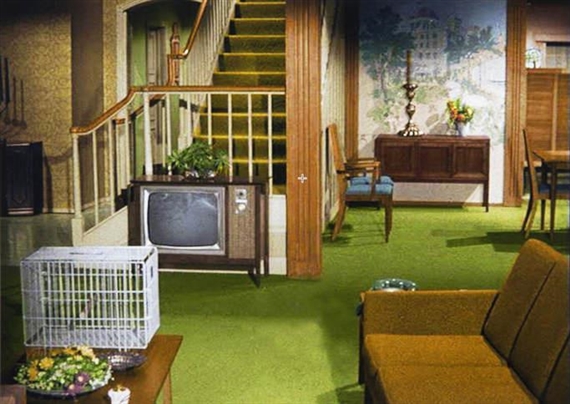Won Ju Lim: Aunt Clara's Dilemma
2. During his period of exile in Los Angeles, Theodor Adorno heard sounds of slamming all around him. “What does it mean for the subject that there are no more casement windows to open, but only sliding frames to shove, no gentle latches but turntable handles, no forecourt, no doorstep before the street, no wall around the garden?” The attrition of the threshold in the American home, while seeming to promise greater transparency to the street and a refreshed spirit of civic conviviality, does just the opposite. All attention is drawn toward the remaining barrier, which takes on a sinister and oppressive mien. Particularly vexing for him was this “turntable handle” – the industrialized retooling of the old lever handle – the doorknob. “Thus,” he writes, “the ability is lost to close a door quietly and discretely, yet firmly.” A whole dialectics of outside and inside dissolves around the turn of the wrist coaxed by this domestic accessory.
3. Witches, as they appear on the television sitcom Bewitched (1964-1972), are figures perfectly at home in continuous space. Doors present no obstacle to them. With an effortless snap of the fingers or a twitch of the nose they can pierce the rigid boundaries of private life, a wanton transgression of the spatial economy of mid-century suburbia. The show’s protagonist, Samantha, must suppress her magical powers to suit the wishes of her continually alarmed husband, Darren. This is a problem, although it pales next to that of her Aunt Clara, whose powers are on the wane. Unable to clear the hurdle of the door in her old age and encroaching senility, Aunt Clara becomes a fetishistic collector of doorknobs.
4. Aunt Clara’s Dilemma is an exhibition by Won Ju Lim about doorknobs, thresholds, and the moment when the old dialectic of outsides and insides becomes a mise-en-abyme. There have always been doors, and doors, in order to be opened and closed, have always been equipped with handles. Once they were carved by hand to fit back into the hand. Then machines inherited the task as a standardized ergonomic ratio. Now, the machines, having progressed to customized algorithms, deliver a handle that could directly respond to your hand. As the old model Apple computers once asked, “Where do you want to go today?”

Recommended for you
2. During his period of exile in Los Angeles, Theodor Adorno heard sounds of slamming all around him. “What does it mean for the subject that there are no more casement windows to open, but only sliding frames to shove, no gentle latches but turntable handles, no forecourt, no doorstep before the street, no wall around the garden?” The attrition of the threshold in the American home, while seeming to promise greater transparency to the street and a refreshed spirit of civic conviviality, does just the opposite. All attention is drawn toward the remaining barrier, which takes on a sinister and oppressive mien. Particularly vexing for him was this “turntable handle” – the industrialized retooling of the old lever handle – the doorknob. “Thus,” he writes, “the ability is lost to close a door quietly and discretely, yet firmly.” A whole dialectics of outside and inside dissolves around the turn of the wrist coaxed by this domestic accessory.
3. Witches, as they appear on the television sitcom Bewitched (1964-1972), are figures perfectly at home in continuous space. Doors present no obstacle to them. With an effortless snap of the fingers or a twitch of the nose they can pierce the rigid boundaries of private life, a wanton transgression of the spatial economy of mid-century suburbia. The show’s protagonist, Samantha, must suppress her magical powers to suit the wishes of her continually alarmed husband, Darren. This is a problem, although it pales next to that of her Aunt Clara, whose powers are on the wane. Unable to clear the hurdle of the door in her old age and encroaching senility, Aunt Clara becomes a fetishistic collector of doorknobs.
4. Aunt Clara’s Dilemma is an exhibition by Won Ju Lim about doorknobs, thresholds, and the moment when the old dialectic of outsides and insides becomes a mise-en-abyme. There have always been doors, and doors, in order to be opened and closed, have always been equipped with handles. Once they were carved by hand to fit back into the hand. Then machines inherited the task as a standardized ergonomic ratio. Now, the machines, having progressed to customized algorithms, deliver a handle that could directly respond to your hand. As the old model Apple computers once asked, “Where do you want to go today?”
Artists on show
Contact details


 ARTISTS
ARTISTS









